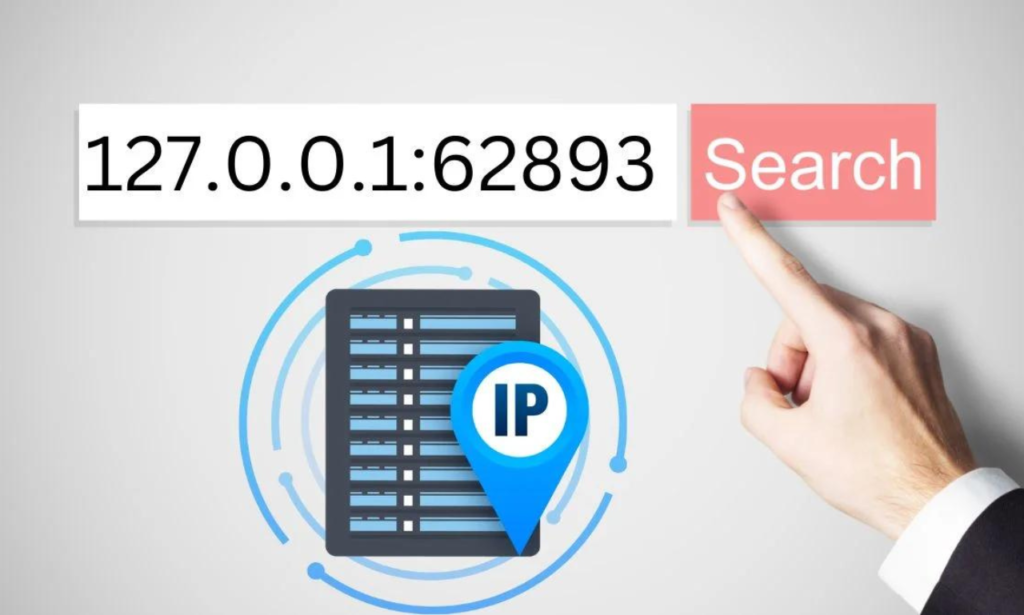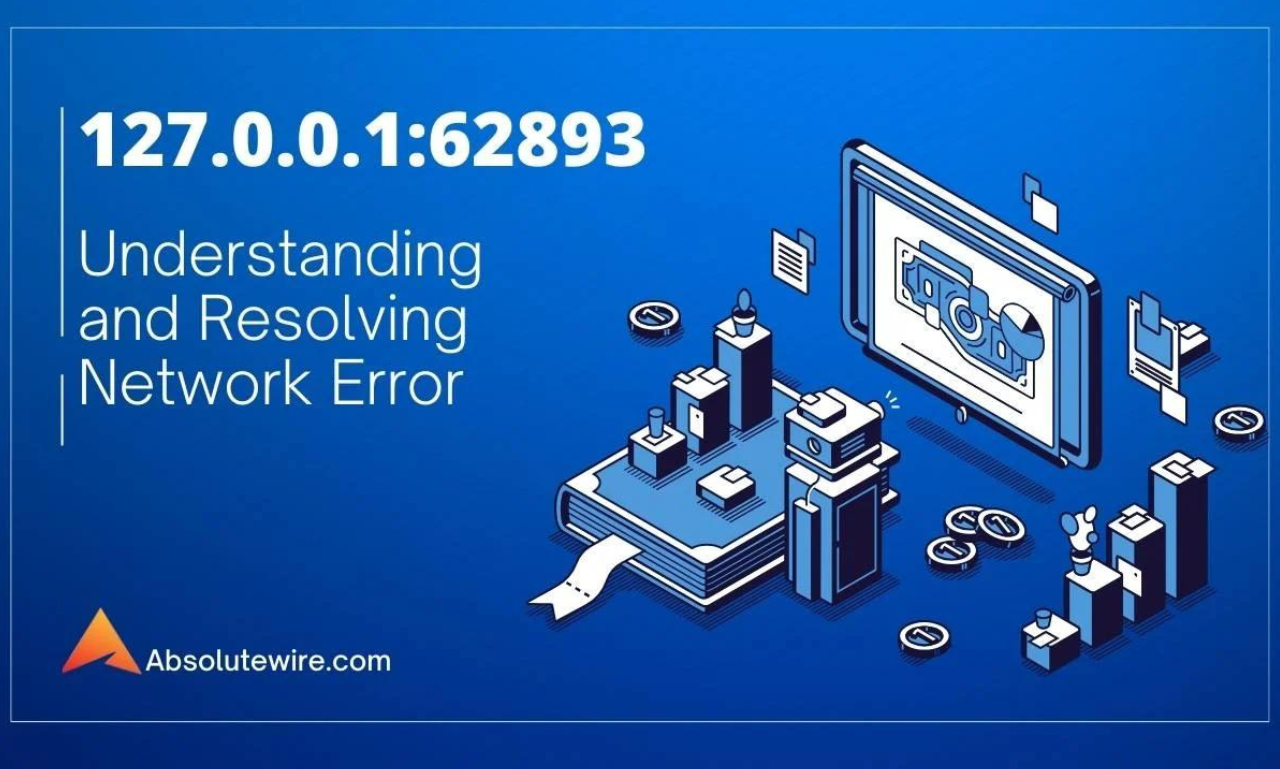If you’ve ever dabbled in network configurations or web development, you’ve likely come across the term “127.0.0.1” and various port numbers. One of those port numbers might be “62893.” These terms may seem daunting at first, but they’re crucial to understanding how devices communicate within a network. In this article, we’ll break down the meaning of “127.0.0.1:62893,” explain how it works, and discuss its significance in various scenarios.
What is “127.0.0.1”?
To start, let’s understand the first part of “127.0.0.1:62893” — “127.0.0.1.” This is known as the loopback address, a special IP address that computers use to communicate with themselves.
The Loopback Address Explained
The loopback address is a reserved IP address used by your device to refer to itself. When you send data to “127.0.0.1,” you’re essentially telling your computer to send the data back to itself. It’s a bit like sending a letter to your own address.
In technical terms, “127.0.0.1” is part of the IPv4 range (Internet Protocol version 4), and it’s reserved for loopback purposes. Any IP address that begins with “127” is used for loopback, but “127.0.0.1” is the most commonly used. This address is essential for testing and development because it allows you to run network applications locally without affecting the wider network.
Why is the Loopback Address Important?
The loopback address is invaluable for several reasons:
- Testing and Development: Developers use “127.0.0.1” to test web servers, databases, and other network services on their local machines. This ensures that the software works correctly before it’s deployed to a live environment.
- Troubleshooting: Network administrators use the loopback address to troubleshoot issues by verifying that the network stack on the device is functioning correctly.
- Security: Since “127.0.0.1” is confined to the local machine, it provides a safe environment to run potentially risky code without exposing it to the internet.
Understanding Port Numbers

Now that we know what “127.0.0.1” represents, let’s move on to the second part of “127.0.0.1:62893” — the port number “62893.”
What is a Port Number?
A port number is a numerical identifier used in networking to distinguish between different types of traffic. When data is sent over the internet or a network, it’s broken down into smaller packets. These packets contain both the destination IP address and a port number, which tells the receiving device which application or service should handle the data.
For example, when you visit a website, your browser uses port 80 (for HTTP) or port 443 (for HTTPS) to communicate with the web server. Similarly, email services might use port 25 for SMTP or port 993 for IMAP.
How Port Numbers Work
Port numbers range from 0 to 65535, and they are divided into different categories:
- Well-Known Ports (0-1023): These ports are reserved for common services like HTTP (80), HTTPS (443), FTP (21), and so on.
- Registered Ports (1024-49151): These ports are assigned by the Internet Assigned Numbers Authority (IANA) for specific services and applications.
- Dynamic or Private Ports (49152-65535): These ports are not officially assigned and can be used by any application for temporary or private use.
What About Port 62893?
Port “62893” falls into the dynamic or private port range, meaning it’s likely used temporarily by applications running on your computer. For instance, when you start a web server or a database server on your local machine, the system may assign it a random port from this range if a specific port isn’t defined.
Using port “62893” with “127.0.0.1” could indicate that a specific application is running locally on your device, listening for incoming connections on this port. Developers and testers might often encounter such configurations when working on local development environments.
Practical Applications of “127.0.0.1:62893”
Understanding “127.0.0.1:62893” in practical terms means recognizing when and why this address and port combination might be used. Below are some scenarios where you might come across “127.0.0.1:62893.”
1. Local Web Development
If you’re a web developer, you’ve probably run a local server on your machine to test your code before pushing it to production. Tools like Apache, Nginx, or Node.js often bind to “127.0.0.1” and use a port number like “62893” to serve your web application.
For example, you might start a local development server for a React.js application, and it could be accessible at “127.0.0.1:62893.” Here, “127.0.0.1” ensures that only your machine can access the server, and “62893” is the port the server is listening on.
2. Database Management
Developers frequently work with databases such as MySQL, PostgreSQL, or MongoDB locally. These databases typically listen on specific ports, but sometimes, for testing purposes, they might bind to a dynamic port like “62893.” Accessing your database locally through “127.0.0.1:62893” means your application connects to the database running on your machine.
3. Testing and Debugging
Testing and debugging are critical in software development, and tools like Postman or curl allow you to send HTTP requests to servers. If you’re testing an API running on your local machine, you might send requests to “127.0.0.1:62893” to verify its behavior.
Similarly, you might debug a network application by checking which ports are open and what services are listening on those ports. In this case, seeing “127.0.0.1:62893” in a netstat output indicates that a service is running locally on port “62893.”
4. Virtual Machines and Containers
With the rise of virtualization and containerization technologies like Docker, you might encounter “127.0.0.1:62893” in more complex setups. For instance, you might run a Docker container that hosts a web service or an API. If that service is mapped to port “62893” on the host machine, accessing “127.0.0.1:62893” from your browser would connect you to the service inside the container.
Similarly, virtual machines (VMs) running on your local machine might expose services on “127.0.0.1” with a specific port number. This setup allows you to interact with applications inside the VM as if they were running directly on your host machine.
Troubleshooting Issues with “127.0.0.1:62893”

While “127.0.0.1:62893” is primarily used in development and testing, you might occasionally run into issues that need troubleshooting. Below are some common problems and solutions.
1. Port Conflicts
If you try to run a service on “127.0.0.1:62893” but encounter an error, it might be because the port is already in use by another application. To resolve this, you can:
- Check Which Application is Using the Port: Use a command like
netstat -an | grep 62893to see if the port is occupied. - Change the Port: Modify your application’s configuration to use a different port that’s not in use.
2. Connection Refused
If you attempt to connect to “127.0.0.1:62893” and receive a “Connection Refused” error, it could indicate that:
- The Service is Not Running: Ensure that the application or service you’re trying to access is actually running.
- Firewall Rules: Although less common on localhost, firewall settings might block certain ports. Check your firewall configuration to ensure that port “62893” is allowed.
3. Access Denied
Sometimes, you might run into permissions issues, especially if the application on “127.0.0.1:62893” requires elevated privileges. To fix this, try running the application as an administrator or with appropriate user permissions.
Security Considerations
Using “127.0.0.1” is generally safe because it confines communication to your local machine. However, there are still some security considerations to keep in mind:
- Do Not Expose Local Services: Ensure that services running on “127.0.0.1” are not accidentally exposed to external networks unless explicitly intended. Misconfigurations could allow unauthorized access.
- Keep Software Updated: Always keep your software up to date to protect against vulnerabilities that could be exploited, even in a local environment.
- Use Strong Authentication: If your service requires a login or other forms of authentication, ensure that these are secure, even if the service is running locally.
Conclusion
Understanding “127.0.0.1:62893” is crucial for anyone involved in web development, network administration, or IT. This combination of localhost and port number is a common sight in local development environments, providing a safe and controlled space for testing and troubleshooting applications.
Whether you’re developing a new web application, managing databases, or setting up virtual environments, knowing how to work with “127.0.0.1:62893” will enhance your ability to build, test, and deploy software efficiently. By mastering the basics of localhost and port numbers, you can better manage your local network and ensure smooth operation in your development workflows.



